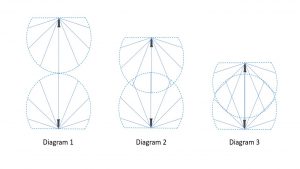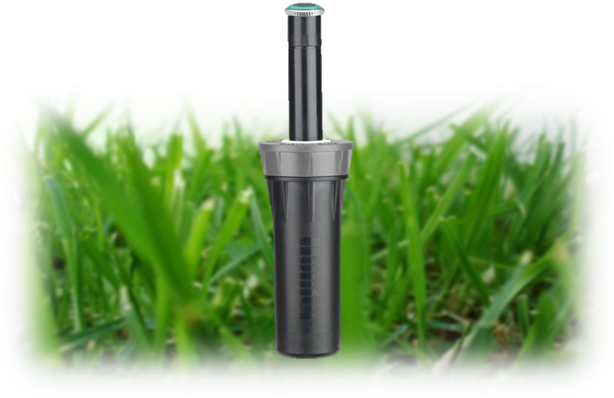Even small lawns will benefit from installed pop-up sprinklers controlled by an appropriate irrigation controller. Unfortunately, these types of systems are more costly and labor intensive to install. Therefore, careful consideration needs to be given to the type, capability, number, and location of the sprinklers throughout your lawn. You want to ensure that you get effective watering over the entire lawn and a quality installation that will be trouble free (i.e. the piping and all connections needs to be able to last for many years).
Some factors to consider when choosing a pop-up sprinkler are as follows:
- As with most devices, the cost of pop-up sprinklers can vary from cheap to more expensive. For a small lawn, cheap pop ups sprinklers may be OK, but they do not last as long as the more expensive ones. Sprinklers are subject to the harsh sun and can cease to pop up if they get clogged with dirt. More expensive sprinklers (such as the Hunter MP rotator series) are more resistant to clogging and squirt out water in fine lines making the watering less vulnerable to wind and evaporation. This ensures that more water falls on the lawn and reduces wastage.
- Pop-ups are sorted according to their range and angle. For example, a pop-up may be rated as having a range of 2.4m to 4.9m and an angle of 210 degrees to 270 degrees. So, this pop-up (depending on the available water pressure and flow) will shoot water from 2.4 meters to 4.9 meters. It will also be able to swing around an arc of 210 degrees minimum to a maximum arc of 270 degrees.
- Cheaper pop-ups come as a complete unit (i.e. the pop-up part and the top spray head are connected). More professional models have separate spray heads so the spray heads can be changed, and different spray heads used in different areas to achieve the best watering coverage.
Once you have selected the most appropriate pop-up sprinklers, you then need to arrange for the installation. Please consider the following when installing your system:
- When spacing the pop-up sprinklers, you need to ensure optimal coverage. Look at diagram 1 and you can see that this spacing is not going to achieve good water coverage. Diagram 2 show an overlap which can be OK but diagram 3 is the optimal. However, this setup will need more sprinklers to cover the lawn. Of course, with wide lawn sprinklers in the middle of the lawn, 360 degrees water coverage would be required.

- There is only so much water pressure and flow from the water supply (i.e. mains, tank, dam or via pumps) so the number of pop-ups that can run in one zone is strictly limited. For example, for mains water supply, this number is typically 3 to 5 sprinklers. Unfortunately, this would provide inadequate coverage for a large lawn. Therefore, for a large lawn, two or more zones, each with 3 or 4 pop-ups, will be required for optimal watering.
Once the sprinklers are set up according to the above consideration, you will need to program the irrigation controller. For multiple zones, most conventional irrigation controllers will need to be carefully and tediously programmed for the separate zones. This can be extremely inconvenient. For example: Zone one could be programmed to start at 9:00am and run for 30 minutes after which zone 2 is programmed to start at 9:30am, run for 30 minutes and finally zone 3 starting at 10:00am and run for 30 minutes. If you want to change the duration to 40 minutes in summer, you will have to reprogram all the individual zones.
A much more sophisticated controller is provided by the Easy Irrigation system where all the comprising zones are set up in a “series” and can be user named something like “Back lawn”. The user then only needs to schedule the “Back lawn” and the system takes care of turning on the comprising zones in order – a much simpler and smarter process.
For more information about the Easy Irrigation controller see www.easyirrigation.com.au




